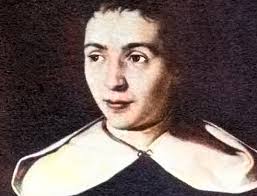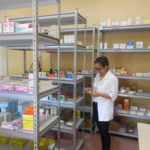Today’s missionary hero is a man who made a profound mark on the Church in the United States. In fact, his list of accomplishments would be expected more of a whole team of workers than of one person. His name was Carlo Gaetano Samuele Mazzuchelli, though he went by Samuel.
Samuel was born on November 4, 1806 in Milan, Italy, the 16thof 17 children of a prominent family. When he was 17, he entered the Dominican order and took the name Samuel. After his novitiate year, he went to Rome to study for the priesthood, and then to France to perfect his French.
In 1828, before he was ordained a priest, he left Europe for the United States of America to become a missionary and was welcomed by Cincinnati bishop Edward Fenwick, a fellow Dominican.
Because he was not yet 24-years of age, he had to receive special permission to be ordained a priest. After he obtained that, bishop Fenwick ordained Samuel on September 5, 1830 and sent him off to serve on Mackinac Island, Michigan and then later northern Wisconsin.
For the rest of his priesthood, Fr. Samuel brought Catholic Christianity to the people of Iowa, Michigan, and Wisconsin, founding parishes, schools, religious communities, and helping build secular institutions. Just in the Diocese of Madison, Wisconsin, for example, he founded 30 parishes and built 20 church buildings plus a number of civic buildings. He founded the Sinsinawa Dominican Sisters in 1847 and, a year later, founded Sinsinawa Mound College and St. Clara Female Academy (now Dominican University in River Forest, Illinois).
Interestingly, it was the Sinsinawa Dominican Sisters who helped Mother Mary Joseph Rogers with organizing the Maryknoll Missionary Sisters when it was being formed in 1912.
Fr. Samuel Mazzuchelli was known as a kind and gentle priest who loved to break down cultural barriers between people.
Fr. Samuel died on February 23, 1864 from a disease he contracted from a parishioner. He is buried in St. Patrick Cemetery in Benton, Wisconsin. Pope St. John Paul II declared him a “Venerable” in 1993.



